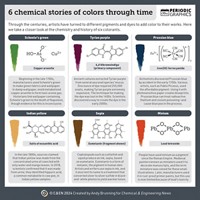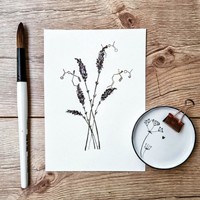Advertisement
Grab your lab coat. Let's get started
Welcome!
Welcome!
Create an account below to get 6 C&EN articles per month, receive newsletters and more - all free.
It seems this is your first time logging in online. Please enter the following information to continue.
As an ACS member you automatically get access to this site. All we need is few more details to create your reading experience.
Not you? Sign in with a different account.
Not you? Sign in with a different account.
ERROR 1
ERROR 1
ERROR 2
ERROR 2
ERROR 2
ERROR 2
ERROR 2
Password and Confirm password must match.
If you have an ACS member number, please enter it here so we can link this account to your membership. (optional)
ERROR 2
ACS values your privacy. By submitting your information, you are gaining access to C&EN and subscribing to our weekly newsletter. We use the information you provide to make your reading experience better, and we will never sell your data to third party members.
Art & Artifacts
Newscripts
Yellow paints, old and new
by Jonathan Forney
July 15, 2022
| A version of this story appeared in
Volume 100, Issue 25
Elements of aging yellow paint

A piece of art can resonate with a viewer instantly. But what a viewer sees in a museum may differ from what the artist created years, decades, or even centuries earlier.
Nouchka De Keyser, a researcher at the University of Antwerp and the University of Amsterdam, and coworkers used several methods to demonstrate how and why pigments in paintings can change over time (Sci. Adv. 2022, DOI: 10.1126/sciadv.abn6344).
“When we’re looking at paintings today, it might not be what the artist originally intended,” De Keyser tells Newscripts. Artists have known for centuries that paints degrade, and they have tried changing their methods to keep their original intentions intact.
The researchers analyzed Abraham Mignon’s 17th-century oil painting Still Life with Flowers and a Watch to learn how different types of paint degrade—specifically, the yellow paint in a rose. At first glance, the rose appears devoid of depth, but Mignon’s original details have been lost because the pigments he used degraded over time. When De Keyser and coworkers mapped the distribution of chemical elements used in the painting, they could see a much more detailed rendering of the rose. Arsenic-based pigments, including those found in Mignon’s work, are generally no longer used due to their toxicity.
“The original dye faded, but the substrate remained,” De Keyser says. “Arsenic sulfide pigments [including the rose’s yellow] are known as the most severely affected pigments. When those pigments are used, the effect is most noticeable. Other pigments are seen but it’s a bit more subtle.”
The team used several noninvasive methods for the study. Macroscopic X-ray fluorescence imaging (MA-XRF) showed the distribution of specific elements—primarily arsenic, calcium, sulfur, lead, and copper—throughout the painting. These elemental signatures indicated which paints were used for different aspects of the piece, such as backgrounds, detail work, and depth.
De Keyser says the MA-XRF was crucial to this research because it “helped us better understand how the original pigment degrades and which pathways it takes.”
Arsenic-based pigments, like the yellow orpiment (As2S3) used to paint the rose, are sensitive to light. As the orpiment degraded, it migrated to other layers of the painting.
De Keyser suggests that mobile apps or digital reconstructions can be used alongside works on display to show artists’ originals. “We have to embrace the degradation of the painting,” De Keyser says. “Through chemical imaging, we can retrace how the artist originally intended it and communicate that to the viewers.”
Cheesy nail polish

Not all yellow paints will last for centuries—or so we hope. The brand Velveeta from Kraft Heinz has partnered with UK-based beauty brand Nails.INC to launch Pinkies Out Polish, which features yellow and red lacquers that are cheese scented but not edible.
The yellow is dubbed La Dolce Velveeta, and the red is called Finger Food.
The beauty industry’s use of food-related products is a growing trend called gourmand. Gourmand usually refers to those who enjoy eating and may overindulge in their favorite pastime. In the beauty industry, however, it means fragrances with edible notes, sometimes described as “olfactory desserts.”
Those falling into the mousetrap who feel the desire to click their cursors on this cheese-related product can purchase Pinkies Out Polish on Nails.INC’s website or Amazon for $15.
Please send comments and suggestions to newscripts@acs.org.
CORRECTION:
This story was updated on July 20, 2022, to state that arsenic-based pigments are in general, not complete, disuse because of their toxicity. The nature of orpiment was also corrected: it is a yellow pigment and was not used for blue or red paints.




Join the conversation
Contact the reporter
Submit a Letter to the Editor for publication
Engage with us on Twitter